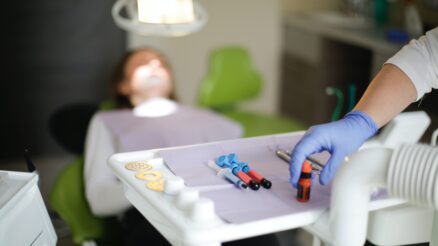Pet owners often inquire about the recovery time of their pets after veterinary surgery. But, unfortunately, there is no one-size-fits-all routine. Instead, it is contingent on numerous factors such as age, fitness, health, and the type of procedure.
Remember that even though the pet’s wound has been closed and the swelling has subsided, that doesn’t mean they’re completely healed. Several things happen when healing. First, some tissues heal faster than others. Second, based on the nature of the operation, full recovery can take up to six weeks or even four months. For a safe and complete recovery, it is important to offer post-operative care that incorporates gradual rehabilitation.
How to Help Your Pet Recover Following Surgery
A veterinarian or board-certified vet surgeon can give you an estimate on how long it will take your pet to recover. To help your pet swiftly recover, follow the individual post-operative guidelines. These are some guidelines to help you take care of your pet.
Maintain a Routine Medication
Make a note of when you’re supposed to give them medications and follow the prescribed schedule. Pain relievers are crucial for the reduction of post-surgery pain. If pain isn’t controlled, it will slow down the healing process. Following the type of operation, your pet will most likely receive one to three different forms of pain medications. In addition, a drug to treat anxiety may be prescribed if necessary so that your pet can focus on healing. To help prevent and treat infections, it is recommended to administer antibiotics under certain conditions. If a doctor has not specified otherwise, the entire course of antibiotics must be completed.
Use an E.collar (also known as “Cone of Shame”)
If your pet chews on their wounds for more than a few seconds, it could increase the chance of infection or cause a reopening of the wound. So, an E-collar is typically only needed during the first 2 weeks after surgery.
Restrict Activity
Your pet should be kept in the confines of small, carpeted spaces so that they can’t jump on furniture, run around your home, or use the stairs. If your dog is already crate trained, this is a perfect location to let them rest. You may want to ensure that your dog is connected to you while you’re at home. Unless your vet tells you differently, you will only walk your pet with your pet on a leash. You must be able to monitor your pet’s movement at all stages of their healing. The length of this restricted time frame will be outlined in the post-operative instructions.
Practice Proper Wound Management
Be aware of signs such as excessive swelling, redness, and bleeding. If your pet is suffering from these symptoms, be sure to consult your vet. Unless otherwise instructed by your vet, there is no need to apply any ointments or clean the wound. Instead, we recommend applying an ice pack on the incision at least once per day for a few seconds each time for the first few days after surgery. Ice reduces inflammation and aids in relieving post-surgery discomfort.
Monitor Your Pet’s Emotions
Panting, pacing, whining, digging, restlessness, and excessive barking and meowing are all signs of anxiety in your pet (or perhaps, discomfort). When you’re away and you’re not home, take time to spend time with your pet and make sure they’re tethered to you and your family. Also, make sure they are in a quiet room when you’re not home, possibly with television or music.
Carolina Vet Specialists Matthews provides an array of surgical treatments to treat soft tissue and orthopedic issues. Their surgical specialists will do a thorough evaluation and discuss the appropriate diagnostic tests, treatments, risks, and expected results with you based on your pet’s concerns.
Conclusion
The procedure can differ in terms of the length of time required to fully recover. The return to competitive levels that athletes and working dogs held before surgery can take as long as a year. Pushing your pet to complete rehabilitation before they’re ready may take longer than a steady and steady recovery.


